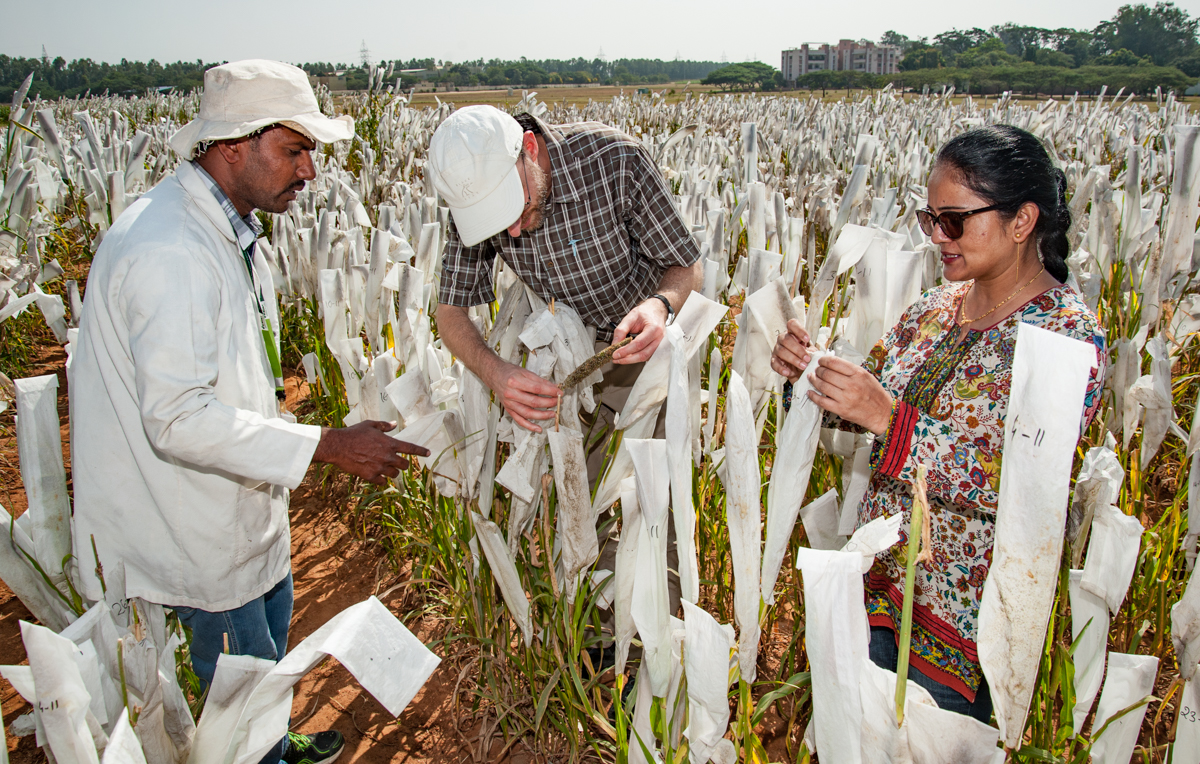Pearl millet
Pennisetum glaucum
Pearl millet is the sixth most important cereal crop globally.
Pearl millet, also known as bulrush or cattail millet, belongs to the grass family, the Poaceae. It is grown in more than 30 countries located in the arid and semi-arid tropical and subtropical regions of Asia, Africa and Latin America.
Pearl millet is the most widely grown of a diverse group of cereal species sometimes referred to together as millets. It is a very resilient crop, able to withstand harsh conditions, and is an important food source in semi-arid regions of Asia and Africa.
It is mostly grown under hot, dry conditions on infertile soils of low water-holding capacity, where other crops generally fail.
Breeding research on pearl millet originally focused on improving the entire system within which farmers produce the crop, including improved lines and technologies such as integrated pest management against specific pests.
More recently, researchers have concentrated on altering the nutritional profile of pearl millet so that it can help to address micronutrient deficiencies, which affect around 2 billion people worldwide. Conventional breeding has resulted in some lines with elevated levels of iron, and there is evidence that these varieties reduce iron-deficiency anaemia in women and children in West Africa and India. Iron-rich millet has been shown to reduce anaemia in teenage schoolchildren in India. Varieties rich in zinc are also being developed.
Wild Relatives
The genus Pennisetum contains about 140 species. The important wild relatives of cultivated pearl millet include: the progenitor, P. glaucum subsp. monodii; P. purpureum; P. pedicellatum; P. orientale; P. mezianum; and P. squamulatum.
Collecting
Collecting Projects
It was probably domesticated in the western Sahel about 3000 BP, and quickly spread through dry tropical Africa and to the Indian sub-continent.
Use
Pearl millet is the most widely grown millet and an important grain and forage crop in Africa and South Asia and a forage crop in the Americas.
Pre-breeding Project
Collections
The CGIAR genebank at the International Crops Research Institute for the Semi-Arid Tropics (ICRISAT) in India holds the vast majority of pearl millet diversity available through GENESYS, with almost 90% of about 26,000 accessions. ICRISAT collections are followed by those held at the Institut de recherche pour le développement (IRD, France) (3,968 accessions), and the Canadian Genetic Resources Programme, Saskatoon (with 3,821) as reported in the global strategy for the conservation of pearl millet and its wild relatives. Although plant breeders have devoted considerable effort to millets, they remain largely neglected in mainstream agriculture. This is reflected in genebank holdings, most of which represent traditional cultivars and landraces, although there are also some advanced lines and a few accessions of wild relatives.
COLLECTING PARTNERS
- Armenian Botanical Society (ABS)
- Ethiopian Biodiversity Institute (EBI)
- Plant Genetic Resources Research Institute (PGRRI, Ghana)
- Kenya Agricultural and Livestock Research Organization (KALRO, Kenya)
- National Centre for Genetic Resources and Biotechnology (NACGRAB)
- Plant Genetic Resources Institute (PGRI - Pakistan)
- Agricultural Plant Genetic Resources Conservation and Research Centre (APGRC)
- Plant Genetic Resources Centre (PGRC, Uganda)

